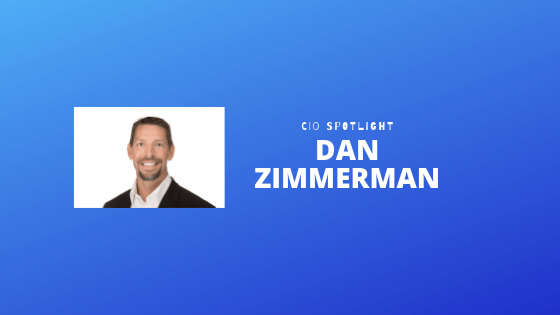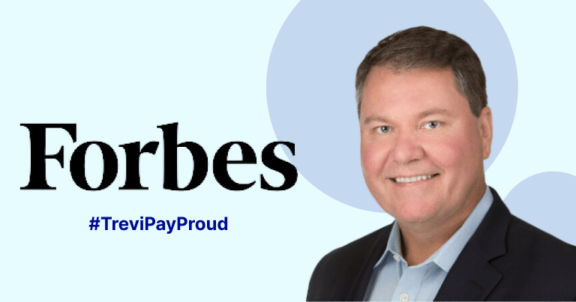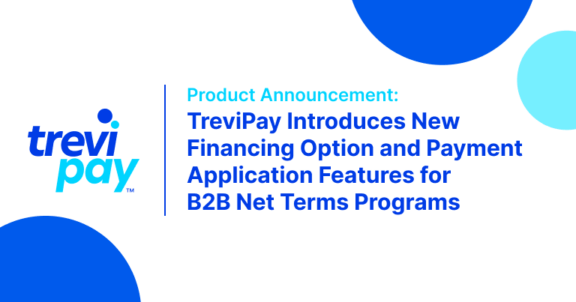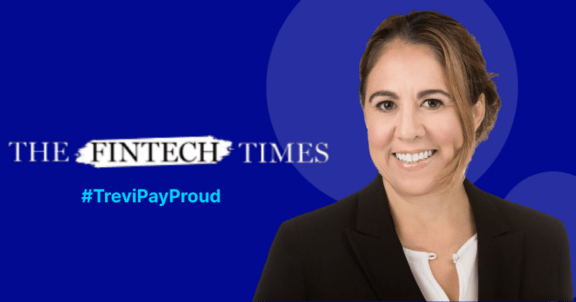News & Insights · Approx. 10 minute read
CIO Spotlight: Dan Zimmerman, MSTS

Name: Dan Zimmerman
Company: TreviPay
Job title: Chief Product and Information Officer (CPIO)
Time in current role: 3 yrs.
Location: Overland Park, KS
Education: I have a Bachelor of Science degree in Computer Information Systems from Strayer University and an MBA from the University of Colorado. Throughout my career I’ve attained certifications based on the position I held at the time. I have Novell CNE, Microsoft MCSE certifications and I am a Certified Agile Scrum master.
Dan Zimmerman serves TreviPay, a global B2B payment and credit solutions provider, as chief information officer. He is responsible for strategy, innovation, and engineering for the company’s software product lines. Zimmerman has over 20 years of experience leading technology, product, and software engineering teams concentrated in the card and payment processing industry including senior roles at TSYS, Western Union and vice president of technology at Nordstrom Bank. Over his career, Zimmerman has led the launch of multiple SaaS applications, led three successful agile transformations, and won two CIO 100 awards.
What was your first job? My first job was with the U.S. Army; I joined when I was 18 years old to work on electronic equipment and computer systems. My first job out of the military was as an End User Support Technician.
Did you always want to work in IT? Yes and No. I wrote my first computer program on a Texas Instruments TI-30 when I was 12 years old. It used the TV as the monitor and I saved my programs on cassette tapes. I moved to an Apple IIe in high school. I liked computers and programming, but I didn’t know there was a field called IT or how to make it a career. It was serendipity that the Army provided me an opportunity to work on electronic warfare equipment and computers.
Explain your career path. Did you take any detours? If so, discuss. My career path led me from end user support to network administration to a network engineer to software engineering to leadership roles with increasing responsibility. I had a couple detours along the way in the form of start-ups providing me opportunities to wear many hats including product management, sales and marketing.
Following my military career, I moved companies every two to four years for the next ten years. This gave me a broad base of experience both in technology and business that I still benefit from today. During this period, I transitioned from IT infrastructure to software and product development. In the mid 90’s, HTML was gaining traction and websites were cropping up. I had experience with programming and began experimenting with web technology. Over a weekend, I built a website for my company. I circulated it around the organization and received positive feedback and the site was published. Shortly thereafter, Microsoft released ASP allowing a database to be connected to an HTML front-end. I thought this would be the future of all applications and I was enamored by the technology. At this time, I was a network engineer and the support ticketing system was difficult to use. I decided to build a new ticket system using the new web technology. I worked with our help desk administrator and spent my spare time building a 100% web-based help desk. The new system was a hit with end users and the engineers, which led to the company’s VP of Advanced Technology inviting me to join his software development team. I spent the next several years in software engineering.
I was promoted to a leadership position after successfully leading multiple product launches. I quickly fell in love with leadership, and it became a passion. I studied leadership concepts and theories and earned my MBA. Over the course of 5 years I moved from leading small development teams to managing multiple teams to VP of Software Engineering. I then asked for the opportunity to lead the IT Operations team in addition to Software Engineering which was my first CIO level role. In my most recent roles VP of Technology for Nordstrom Bank and currently, Chief Product and Information Officer for TreviPay, the diversity of my career path has helped me to make contributions to the organizations that would not have been possible otherwise.
What business or technology initiatives will be most significant in driving IT investments in your organization in the coming year? Everything today is about automation, speed and data. Our core product is “TreviPay” for B2B companies. We are applying machine learning and artificial intelligence to the product to automate underwriting and make better credit decisions. We are also applying machine learning to help our customers forecast and identify sales opportunities. For the last three years, we have been working to “servicize” our platform and move those services to the cloud (AWS leveraging Kubernetes). We are also continuing to invest in internal operations automation and business intelligence, which includes our data warehouse and analytics tools.
What are the CEO’s top priorities for you in the coming year? How do you plan to support the business with IT? At TreviPay, we view business priorities and technology priorities as one and the same. Our CEO’s priorities are:
• focusing efforts across the organization on our core competencies and standardizing our product offering
• increasing automation
• leveraging AI
These priorities are not only supported by IT, but driven by IT. The company strategy is synonymous with the product and technology strategy.
Does the conventional CIO role include responsibilities it should not hold? Should the role have additional responsibilities it does not currently include? I see more and more CIO roles evolving to include product and service leadership. As product and service offerings become increasingly dependent on technology, the CIO becomes more critical to the company strategy. In a lot of cases, it makes sense to align these areas under the CIO’s leadership.
Are you leading a digital transformation? If so, does it emphasize customer experience and revenue growth or operational efficiency? If both, how do you balance the two? Yes, revenue growth, improving customer service and operational efficiency are all part of our digital transformation. It is tough to balance. In past years, operational efficiency initiatives were dropped in favor of customer and revenue-centric initiatives or as soon as anything new hit. Over the last two years, we have all aligned at the executive level and created a minimum dedicated capacity for internal automation and digitization. We’re an Agile company using Scrum, for us that means there is a scrum team dedicated to operational automation.
Describe the maturity of your digital business. For example, do you have KPIs to quantify the value of IT? We have KPIs that measure availability, application performance, incident management and more. KPIs that measure value can be difficult to formulate. Throughout my career, I’ve found the best approach is 100% transparency. The best tools to support this is the Objectives and Key Results (OKRs) methodology of goal setting. Each quarter, I work with the CEO and our VPs to define the organizations OKRs, which then cascade down to every team member in the company. Many of the objectives are shared across teams which dramatically improves alignment on priorities and ensures our team is providing the value desired.
What does good culture fit look like in your organization? How do you cultivate it? We use the phrase “do they have our DNA.” Our DNA is comprised of three characteristics: high emotional intelligence (EQ), an entrepreneurial spirit and a growth mindset. We’ve built a series of questions every team member answers annually as a self-assessment and then their leader does the same assessment. Leaders then coach on the gaps and set development goals based on three elements of our DNA.
What roles or skills are you finding (or anticipate to be) the most difficult to fill? Engineers with AI and DevOps experience are the toughest to find right now. Top talent with those skills are not unemployed so you have to network your way to them and sell them on your culture and mission.
What’s the best career advice you ever received? Very early in my career I was working on a corporate leadership trainer’s PC. He was a former CEO and a very experienced leader who had moved into executive coaching and leadership training. While I was sitting at his desk, troubleshooting an issue for him, I noticed an excerpt from a book that was taped on the side of his monitor:
|
WINNERS |
LOSERS |
|
Winners say, ‘If it is to be, it is up to me’. |
Losers say, ‘I can’t help it’. |
|
Winners translate dreams into reality. |
Losers translate reality into dreams. |
|
Winners empower. |
Losers control. |
|
Winners say, ‘Let’s find out’. |
Losers say, ‘Nobody knows’. |
|
Winners are part of the solution. |
Losers are part of the problem. |
|
Winners are not afraid of losing. |
Losers are afraid of winning. |
|
Winners work harder than losers. |
Losers are always too busy. |
|
Winners say, ‘I was wrong’. |
Losers say, ‘It was not my fault’. |
|
Winners want to. |
Losers have to. |
|
Winners always make time. |
Losers often waste time. |
|
Winner make commitments. |
Losers make promises. |
|
Winners say, ‘I’ll plan to do that’. |
Losers say, ‘I’ll try to do that’. |
|
Winners say, ‘I’m not as good as I can be’. |
Losers say, ‘I’m not as bad as other people’. |
|
Winners listen to what others say. |
Losers wait until it’s their turn to talk. |
|
Winners catch others doing things right. |
Losers catch others doing things wrong. |
|
Winners learn from others. |
Losers resent their colleagues. |
|
Winners see opportunities. |
Losers see only the problems. |
|
Winners do it. |
Losers talk about it. |
|
Winners feel responsible for more than their jobs. |
Losers frequently state, I only work here. |
|
Winners say, ‘There ought to be a better way’. |
Losers say, ‘That’s the way it’s always been done’. |
|
Winners celebrate others. |
Losers complain about others. |
|
Winners are willing to pay the price. |
Losers expect it on a silver platter. |
|
Winners always expect success. |
Losers always expect failure. |
|
Make it a winning life. |
|
|
Wolfe Rinke |
|
Every phrase comparison I read made me more motivated and inspired. When he came back in the room, I asked him if I could copy it. He said yes and told me that anybody who can live on the left side of that chart will be very successful. I’ve tried to do that every day since.
Do you have a succession plan? If so, discuss the importance of and challenges with training up high-performing staff. We are continuously growing leaders. Our HR team does a great job with formalized leadership training, helping ensure we have succession plans for our positions.
What advice would you give to aspiring IT leaders? If you have a growth mindset you will be successful. Try lots of things early in your career. Write code, configure servers on AWS or Azure, manage projects and take every opportunity you can to get in front of customers. When you move into leadership, learn how to be a great leader. Read about other great leaders and learn how to be a genuine servant leader.
What has been your greatest career achievement? I’ve been part of teams that have won awards and launched several successful products, but the achievement I am most proud of is that I’ve successfully transformed the culture of several technology teams. I periodically receive emails and LinkedIn messages from former team members who thank me for my leadership and fostering a result driven organization that was not only enjoyable to work in daily, but also provided them with tools to further their careers. Receiving this feedback is very rewarding to me.
Looking back with 20:20 hindsight, what would you have done differently? Network more. As most IT professional are introverts, this isn’t always a comfortable thing. The more you network, the more your organization and your career will benefit.
What are you reading now? The last two books I’ve read were Extreme Ownership: How U.S. Navy SEALs Lead and Product Leadership: How Top Product Managers Launch Awesome Products and Build Successful Teams. I highly recommend Extreme Ownership.
Most people don’t know that I… I was stationed in Berlin, Germany and had the amazing fortune to be there the night the wall fell. Thousands of East Germans rushed into West Germany. It was a significant moment in world history in which I witnessed first-hand.
In my spare time, I like to… Spend time with my family, workout, and ride motorcycles. My Dad and I are one-third of the way through our mission to ride through all 48 contiguous states.
Ask me to do anything but… Read contracts or manage vendors. I’d much rather be brainstorming with the team on how to make a customer’s experience better.
Stay up-to-date with the latest from TreviPay
Thank you for subscribing! You will now receive email updates from TreviPay.



